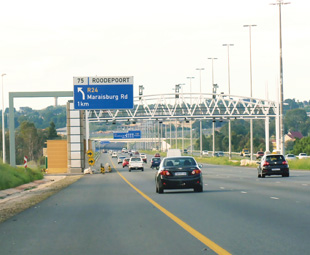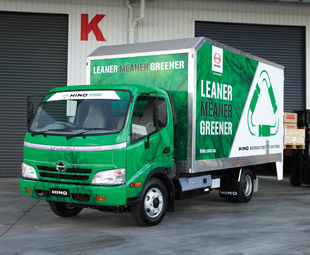Government killed the BEE star

High toll tariffs on the highways of Gauteng will hurt and, in many instances, even kill transport businesses, with very few benefits to counter the economic devastation that seems inevitable.
Cabinet last month approved a new toll fee structure for the Gauteng Freeway Improvement Project (GFIP). According to the revised tariff structure, motorcycles class A1 would pay 24c/km (down from 29c/km); light motor vehicles would pay 40c/km (down from 49,5c/km); medium vehicles would pay R1/km (down from R1,49/km) and longer vehicles would be charged R2/km (from R2,97/km).
Mike Schüssler, consulting economist of the Road Freight Association (RFA), says that while the RFA welcomes the lower tariffs, it believes that it is still too high. For truck operators to stay in business every attempt will have to be made to pass on these costs to customers and ultimately consumers.
The freight industry underwent a nine-day strike earlier this year, and also had to bear the consequences of the recent steel and fuel industry strike that inhibited movement of trucks. This has cost the industry millions of rands in lost revenue.
Gauteng operators have also had to bear the cost of the increase in licence fees of 34% and cross-border operators have had to bear increases in permit fees of up to 1 000% while service delivery is still questionable.
“Even after the reduction in toll fees, a class C vehicle operating on the GFIP network for 70 km per day (single trip) at R2/km for at least three trips a day will face an increase in cost of 11%,” says Schüssler. “Local delivery vehicles travel more frequently per day on the GFIP network. A medium-sized vehicle (class B) travelling 16 km per day (single trip) along approximately 6 km on the GFIP network can do about six trips a day. The tariff of R1/km will result in an 11% increase in cost.
“A container operator picking up containers at City Deep and delivering to an address in the Kya-Sands area will travel approximately 73 km (including the return leg) on the GFIP network. These operators are typically SMME operators and earn total revenue (turnover) of only R1 800 per pickup. With the profit margin being as low as 2% (R0,75/km) and with the proposed toll fee of R2/km, this will lead to the death of already struggling small business and especially BEE operators,” he said.
The freight industry has been widely criticised for its lack of transformation, but large cash outlays and cash flow constraints have been major barriers to entry for small businesses into the industry and the proposed toll fees will further exacerbate this problem.
 “The courier industry will be hugely affected by the rollout of e-tolling,” said Schüssler. “On average a courier vehicle (bakkie) travelling from Isando to areas in and around Johannesburg will travel about 150 km a day on the e-toll network. Average toll costs will amount to R60 per day, which is equivalent to a 17% increase in costs. For an operator with a fleet of 100 bakkies this would amount to approximately R100 000 per month – a huge cash outlay for any business. It should also be noted that many of the large courier companies outsource their business to owner drivers – a major avenue for BEE empowerment.”
“The courier industry will be hugely affected by the rollout of e-tolling,” said Schüssler. “On average a courier vehicle (bakkie) travelling from Isando to areas in and around Johannesburg will travel about 150 km a day on the e-toll network. Average toll costs will amount to R60 per day, which is equivalent to a 17% increase in costs. For an operator with a fleet of 100 bakkies this would amount to approximately R100 000 per month – a huge cash outlay for any business. It should also be noted that many of the large courier companies outsource their business to owner drivers – a major avenue for BEE empowerment.”
Schüssler says it is a misnomer that the savings in maintenance as a result of the GFIP roads will outweigh the costs of the tolls. “Not all the routes travelled by the trucks are well maintained, which results in increased maintenance costs once off the toll network. Any savings gained from the GFIP will merely offset some of these costs. One good road amongst many bad roads cannot bring a major change to the maintenance costs of trucks. Congestion will in all likelihood increase on other roads as people and firms may not be willing or able to pay for the GFIP.”
The RFA is of the opinion that a further reduction is possible if government were to finance R1 billion of the costs for the next two years, after which the financing could be reduced to R500 million for two years and then toll fees could be increased again. In this period the Gauteng Department of Transport could increase spending on public transport, as well as road infrastructure, so that after four years there would be suitable alternative routes and an efficient public transport network.
“The Gauteng Province will spend R469 million on roads in the 2011/12 financial year, while KwaZulu-Natal will spend R1,98 billion on roads over the same period,” according to the RFA. “There must be a very good reason why the busiest province with the most vehicles spends less than a quarter of the budget allocated by a poorer province.
“A ring-fenced fuel levy should also be considered for national and provincial roads and perhaps even main metropolitan roads to ensure that there are dedicated funds available for the road network,” says the RFA.
The overall cost of business has increased substantially this year – from escalations in electricity, municipal rates and taxes, fuel taxes, employment costs and the forthcoming fuel price, the proposed carbon tax, tyre disposal levies and the reconfiguration of fleets carrying high cube containers. These will place further pressure on severely strained resources. Many – mainly SMMEs – will not be able to absorb these costs and neither will they be able to pass them on to clients and in all likelihood the GFIP tolls will result in the death of these small operators.
According to Gary Ronald, public affairs manager of the Automobile Association SA, the impact of the toll tariffs on the economy would be massive. “Prices of commodities will increase by at least one percent.”
But, he says, the conversation is definitely not over. “There are already organisations talking about protest action. For them it is definitely not over, whereas for government the conversation was over before it even started. They made it clear from the onset that we are not going to talk about the concept of tolling, only how much we will pay in toll fees.”
Published by
Focus on Transport
focusmagsa



